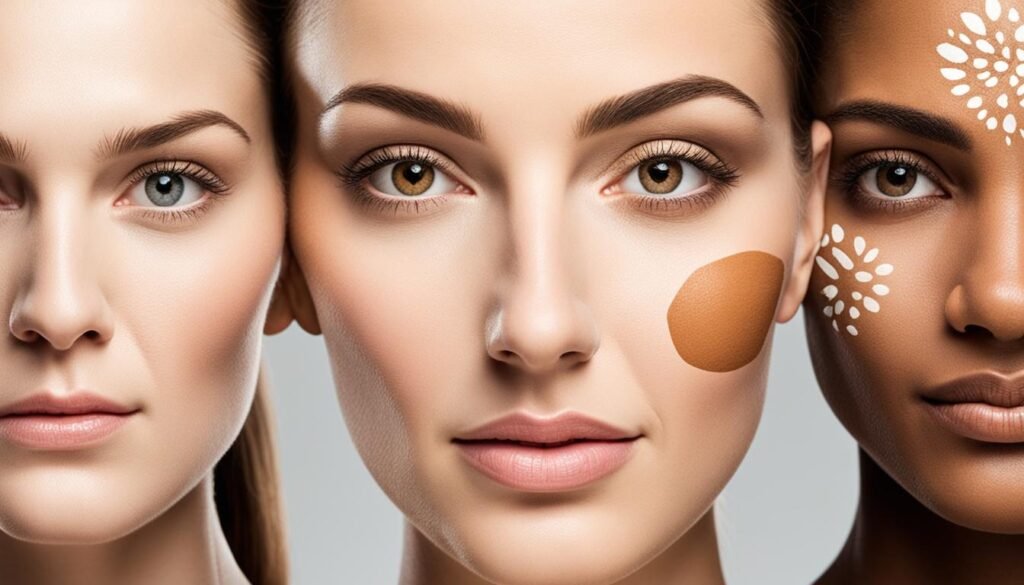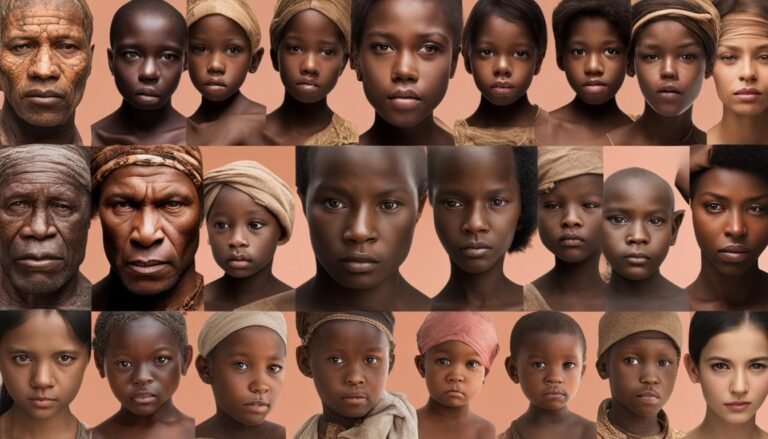Can skin color be influenced by the environment?
Have you ever wondered why people from different regions of the world have varying skin colors? Is it purely a result of genetic inheritance, or could the environment play a role in shaping our skin pigmentation?
Human skin color is a fascinating subject, as it represents our species’ adaptation to diverse environments over thousands of years. The pigment melanin, produced by melanocytes in the skin, plays a crucial role in determining our skin color and acting as a protective barrier.
The distribution of skin color globally is closely linked to the intensity of ultraviolet (UV) radiation. In regions with high UV exposure, darker skin colors have been favored by natural selection for their increased protection against radiation damage. Conversely, lighter skin colors are more common in areas with lower UV exposure.
But is it possible for the environment to directly influence our skin color? Can factors such as climate, diet, or lifestyle choices contribute to changes in our skin pigmentation?
Key Takeaways:
- Human skin color is influenced by both genetic and environmental factors.
- Melanin, produced by melanocytes, determines skin pigmentation and acts as a protective barrier.
- Global distribution of skin color is closely correlated with the intensity of UV radiation.
- In regions with high UV exposure, darker skin colors provide better protection against radiation damage.
- Lighter skin colors are more common in areas with lower UV exposure.
The Role of UV Radiation in Skin Color Variation
Ultraviolet (UV) radiation, composed of UVA and UVB, has damaging effects on the skin. Dark-skinned individuals are more protected against radiation damage due to higher levels of melanin, which acts as a protective barrier. The global distribution of human skin color is highly correlated with the intensity of incident UV radiation. In regions with high UV radiation, darker skin colors have been favored by natural selection, while lighter skin colors are predominant in regions with lower UV radiation.
The depigmentation of the skin in Europe and Asia happened due to different genetic mutations, allowing for better absorption of UV radiation to catalyze the synthesis of Vitamin D, essential for bone mineralization.
“The distribution of human skin color worldwide is a result of adaptation to different levels of UV radiation.”
Genetics and Skin Color Adaptation
The genetics of skin color is a complex and fascinating area of study. Researchers have identified over 150 genes that play a role in determining skin color. One key enzyme in this process is tyrosinase, which is responsible for melanin production. Genetic mutations and polymorphisms contribute to the variations in skin color among different populations.
The Role of Genetic Mutations and Polymorphisms
Genetic mutations and polymorphisms are responsible for the diverse range of skin colors observed in human populations. These variations occur as a result of changes in the genes involved in melanin production and distribution. For example, mutations in the MC1R gene have been linked to red hair and fair skin in individuals of European descent.
“Genetic mutations and polymorphisms play a crucial role in skin color adaptation, allowing populations to adapt to different environments and levels of UV radiation exposure.”
Natural Selection and Skin Color Adaptation
Natural selection has played a significant role in shaping the evolution of skin color. In regions with high exposure to UV radiation, such as closer to the equator, darker skin colors have been favored by natural selection. This is because dark skin provides protection against the harmful effects of UV radiation, reducing the risk of skin cancer and other related issues.
Conversely, in regions with lower levels of UV radiation, such as higher latitudes, lighter skin colors have been advantageous. Light skin allows for better absorption of UV radiation, which is essential for the production of vitamin D, necessary for bone health and other bodily functions.
Ongoing Process of Skin Color Adaptation
Skin color adaptation is an ongoing process that is influenced by various factors, including demographic history, natural selection, and population movements. As populations migrate and intermix, the genetic makeup and resultant skin color of a particular group can change over time. For example, individuals with mixed ancestry often exhibit skin colors that reflect a blend of their genetic heritage.
The image below illustrates the complex interplay between genetics and skin color adaptation:

Conclusion
Skin color is a complex trait that is influenced by a combination of genetic and environmental factors. The distribution of human skin color worldwide is a result of our ancestors’ adaptation to different levels of UV radiation in their environments. Darker skin tones have evolved in regions with high UV radiation as a protective measure against the damaging effects of sun exposure, while lighter skin tones have emerged in regions with lower UV radiation to aid in the synthesis of Vitamin D.
Genetic mutations and polymorphisms play a significant role in the evolution of skin color. Over 150 genes have been identified as having an effect on skin pigmentation, with the enzyme tyrosinase being particularly important. These genetic variations contribute to the variations in skin color observed among different populations.
However, despite the progress made in understanding the genetics of skin color, there is still much we need to learn. The genetic basis of human skin pigmentation is complex and multifaceted. Ongoing research aims to uncover the specific genes and mechanisms involved in melanin production and skin color adaptation.
Studying skin color variation provides valuable insights into human adaptation to different environments and the intricate interplay between genetics and the environment. By understanding the factors that influence skin color, we gain a deeper appreciation for the diverse tapestry of human pigmentation and the remarkable ways in which our species has adapted to its surroundings.






